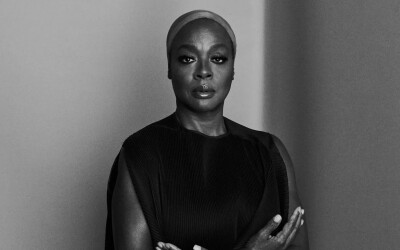‘I use soft colours people wouldn’t associate with black men’
The LA-based painter talks about how her hyper-realistic work reflects and challenges society’s ideas about black lives
“I’ve never walked in the shoes of a black man. I don’t know what it’s like to be a black man. And [despite a love of and relationship with black men] I wanted to start with my experience of not being able to have that fuller understanding.”
It’s a risky and provocative way to begin a body of work. But as 45-year-old Los Angeles-based artist Calida Rawles talks about her work, that poignant awareness of our human inability to truly know anyone else’s experience seems to lie at the centre of her new four-piece exhibition, On the Other Side of Everything.
I spoke to Rawles ahead of the opening of her first solo show in New York, held at Lehmann Maupin. Rawles signed with the gallery in February. In 2019, she painted the cover image for Ta-Nehisi Coates’ first novel, The Water Dancer. Then, in 2020, she had her first solo exhibition, A Dream for My Lilith, at the Los Angeles gallery Various Small Fires. It was a show that, like her new one, used the interplay of water and the human form as a medium to explore identity, race, human relationships and the social politics of blackness in America, with radiating, shimmering and provocative work centred on black bodies.
Even though her childhood in Wilmington, Delaware, was replete with art activities, her creative vision wasn’t always strong. As a New York University masters student in painting, Rawles felt discouraged and unsupported in the practice of hyperrealism and figuration that came so naturally to her. It was only in 2014 when she started painting bodies in water that things really began to click creatively. She took photographs of people submerged in bodies of water, then discovered ways she wanted to push the images further.
Rawles learnt to swim as an adult and it spurred her to think about the complexity of water, how she could use it as a tool to invite reflection on human relationships and perceptions, particularly about the range of black life experience.
“I love the duality of water and how it can serve as a metaphor for life,” she says. “It’s beautiful and healing, and I feel weightless and unburdened in it. But at the same time, it can be dangerous as well as restorative: historically, black people have always had a complicated relationship with water.” (This is for a variety of reasons, such as the Middle Passage, when enslaved people were taken from Africa to the Americas, and segregated beaches and pools.)
The large-scale works in this new show are centred on the black male form, and the paintings blur the lines between figuration and abstraction. The effect mirrors what Rawles believes is our human tendency to see distorted reflections of other people, a complex and painful historical reality for black boys and men.
An avid reader, Rawles created the four pieces of the exhibition in conversation with Ralph Ellison’s 1952 novel Invisible Man, in which the main character reflects on how, as a black man, he is never seen clearly. Rather he is seen through distorted lenses that only reflect the viewer and whatever is conjured up in their fragmented imagination. Rawles is invested in presenting black male figures as beautiful, ethereal beings, rather than the harmful depictions often pushed by mainstream society.
The grand size of the canvases makes these figures loom large, forcing us to confront them but also dwarfing their reality. All the figures are seen from underwater, and the viewer has no idea what the figures are looking at or seeing. Rawles started making these images during the pandemic and in the midst of the Black Lives Matter global protests.
“In this exhibition the viewer is on the other side of everything in the experience of these men,” Rawles says. “We see a part of their form but then, with the added distortion, it creates a whole new image that’s not a true portrait of the person. Our vision is as though we are all underwater looking at abstract versions of [other people’s] world and their existence.”Rawles suggests that these days, rather than black men being invisible as Ellison wrote, maybe there’s a new hypervisibility of black men. “But what people are seeing is only a reflection of their experience or lack of experience with black men. How else do you explain the ability to kill another human in the light of day? These [policemen] don’t see a full person or a father or a son. They see a threatening black form that they have to subdue.”






